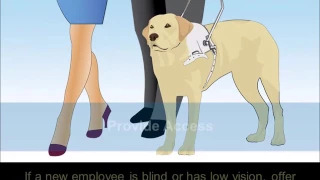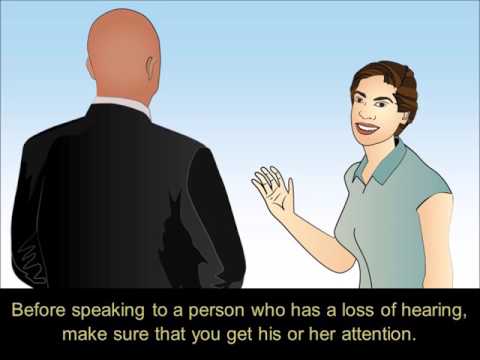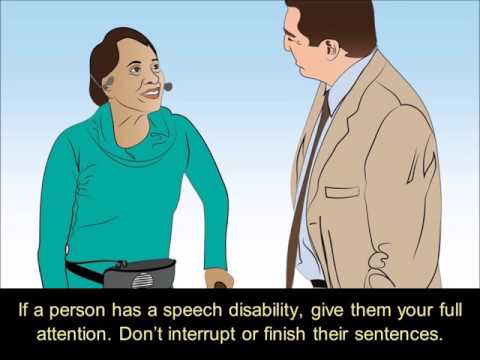Thank you for your interest in CAP Online Training.
CAP's Online Training is currently under development. To view CAP's training in the meantime, please visit CAP's YouTube page at https://www.youtube.com/@dowcap1990. As we add new content, it will appear below:
CAP has created a series of online training modules. These modules will help you understand how to hire employees with disabilities and wounded, ill and injured Service members and how to provide reasonable accommodations after they are hired.
Disability Etiquette Part One: Introduction and Background

* To access the video click on the Youtube link.
If you are using the DoW Network, click on the MilTube link.
YouTube | MilTube
4 minutes, 20 seconds
The Computer/Electronic Accommodations Program’s disability etiquette training is targeted to supervisors and co-workers of individuals with disabilities. This training is intended to provide basic tips that can serve as a guideline when interacting with an individual who has a disability.
Proper disability etiquette creates a comfortable work environment and supports equal access and advancement for all.
Disability Etiquette Part Two: Individuals with Dexterity and Mobility Limitations

* To access the video click on the Youtube link.
If you are using the DoW Network, click on the MilTube link.
YouTube | MilTube
4 minutes, 22 seconds
Individuals with dexterity or with mobility limitations can include: individuals who use wheelchairs, individuals with limited mobility and individuals with upper extremity dexterity limitations. Giving these individuals opportunities to describe their preferred methods of functionality and giving them equal access will allow for better work environments
Disability Etiquette Part Three: Individuals Who are Blind or Have Low Vision

* To access the video click on the Youtube link.
If you are using the DoW Network, click on the MilTube link.
YouTube | MilTube
5 minutes, 33 seconds
Individuals who are blind, have low vision or have visual impairments, are considered to have different limitations and should be treated accordingly. Remember to ask the individual before taking any action, including assistance.
Disability Etiquette Part Four: Individuals Who Are Deaf or Hard of Hearing

* To access the video click on the Youtube link.
If you are using the DoW Network, click on the MilTube link.
YouTube | MilTube
5 minutes, 11 seconds
“Deaf” refers to individuals who are unable to hear will enough to understand speech; preventing the use of speech as a means for processing information. While hard of hearing limitations can range from the ability to hear environmental sounds to those who can understand speech usually with the help of a hearing aid or cochlear implants.
Disability Etiquette Part Five: Individuals with Cognitive Limitations

* To access the video click on the Youtube link.
If you are using the DoW Network, click on the MilTube link.
YouTube | MilTube
5 minutes, 43 seconds
Individuals with cognitive limitations can include: individuals who experience memory loss, perception problems or other issues which can be caused by dyslexia, ADHD, stroke, PTSD, TBI or other conditions. In most cases, being direct, exact when speaking to individuals with these type of limitations is best.
Disability Etiquette Part Six: Individuals with Communication Limitations

* To access the video click on the Youtube link.
If you are using the DoW Network, click on the MilTube link.
YouTube | MilTube
2 minutes, 38 seconds
Communication limitations can be caused by Cerebral Palsy, stroke, traumatic brain injury, ALS, MS or other conditions. When interacting with individuals with a speech disability, it is best to give them full attention as to make communication effective. If you are unsure of what is being communicated, ask for clarification or repeat for verification.
Disability Etiquette Part Seven: Individuals with Non-Obvious Disabilities

* To access the video click on the Youtube link.
If you are using the DoW Network, click on the MilTube link.
YouTube | MilTube
6 minutes, 31 seconds
Individuals with non-obvious disabilities such as chronic pain or any form of sleep disorder can be accused of exaggerating their disabilities; however, symptoms including extreme fatigue, dizziness and pain can occur due to chronic illness, injury, birth disorders, among other conditions and are not always obvious to others.


